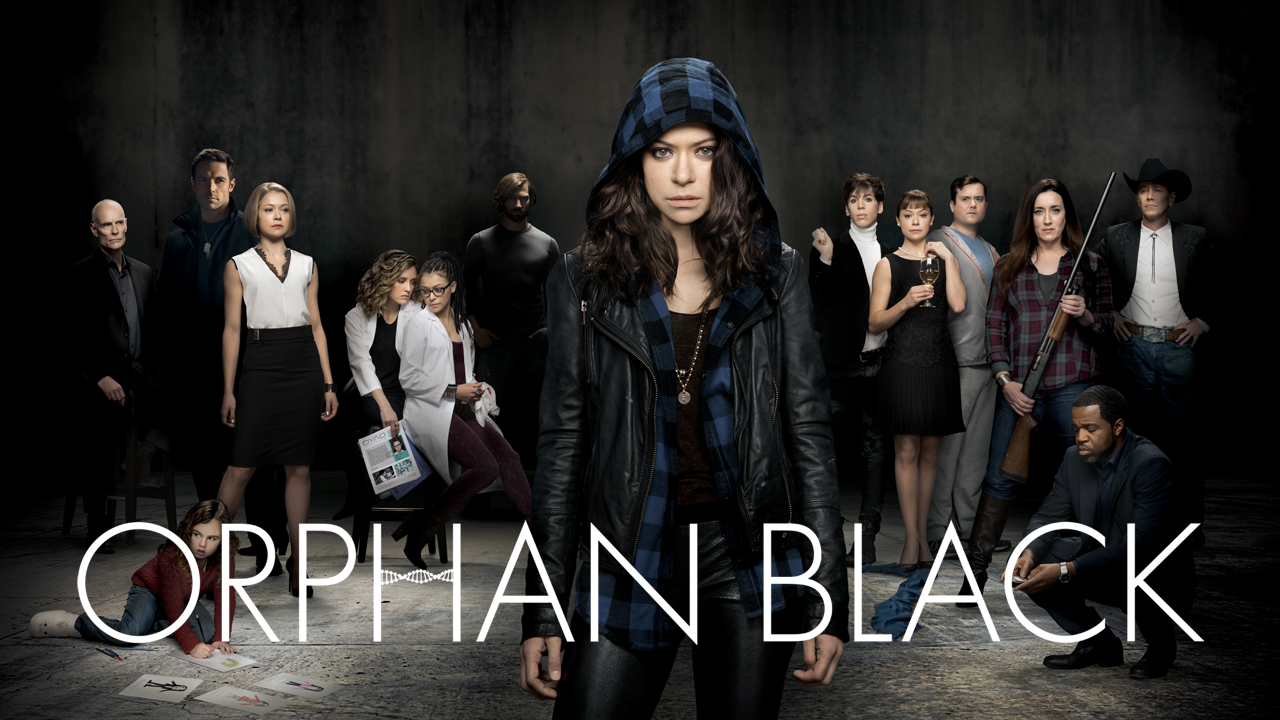Contextual Studies: Orphan Black Case Study
Orphan black is a Canadian thriller series that first aired in 2013,
produced by BBC America. It revolves around the life of Sarah Manning, who’s
world is turned upside down when a woman almost identical to her, commits
suicide right before her eyes. Sarah then attempts to take over the woman’s
life for her own selfish gain but soon find out she’s part of something much
bigger than she ever imagined.
The program is centred around Sarah and the people who we soon
learn are her clones. Now due to the structure of the show (the first season
especially), there are a variety of theories that can be applied when
approaching this show from a critical angle. The narative, while linier withholds certain information and cuts between scenes/characters to reveal key plot points that drive the narative foward leavong the audience to fill in teh clues to the backstory.
To keep good pacong and maintain audience atention, Orphan Black uses montages (a common thriller convention) to broadcast a lot of information in a short period of time. This is often backed by some kind of soundtrack with a fast tempo to match the quick shots and cuts (an example of rhythmic editing). Each scene will open with an establishing shpt however often, this is an internal one rather than external to craete a sense of mystery. Since the show is fond of close up's and pans to maximise tension it is effective that it has a soundtrack playing behind the action/dioulouge which changes slightly depending on which character we are focussed on, demonstarting coventions of both the thriller adn crime genre.
Feminist theories can be applied here. Theorists like carol clover, although
traditionally horror writers make valid points that can be applied to Orphan
Black. Firstly there is the idea of the “final girl”, which traditionally is
applied to horror movies. However the simplest definition of this is "the
last character left alive” and in Orphan Black we get all the character
development of a "final girl" but with a thriller setting as opposed to a slasher
movie.


Character development is effective throughout the show. At the
start of the series Sarah fits the character archetype of the selfish street
wise rebel. Camera angles are used to demonstrate this, when witnissing close up shots of Sarah we are mostly at eye level, with quick cuts to match her speach and personality, but as she becomes more caring we get longer shots to show the emotions on her face and high angel shots of other characters as if we are caring for them. Such techniques ahve a similar effect with Allison who begin the series very passive. But is forced to kill, commit crime and toughen up to protect her loved ones. As a result scenes with her feature quicker ciuts and the music becomes louder and more intense to match her situation, she begins to make subtle changes to her clothes and hair as the season progresses, (showing
effective character development and fitting the idea of “the final girl”).


We noted that the show uses camera angles to demonstrate the balance of power (a common genre convention) especially when Rachel and Sarah are in scenes together since their characters are polar oposites. But the show blends hand held and static shots seamlessly. Since Sarah spends most of season 1 impersonating her dead
clone, she begins to loose her snse of self (which theorists suggest is an effectivef form of character development). Which theorists like Freud state
can cause a sense of Alienation.Staging is used effectivly when the clones have o impersonate one another, picking up certain mannerisms, speach patterns etc, acheiving a greater sense of self overall.
It is worth mentioning that Orphan black recognises the Freudian
ideas of “the Uncanny”, “the other”, and “the intangible”. Since the show
mostly reflects realism and the inclusion of gay and/or trans characters
reflects modern times. Its use of technical aspects (camera editing
mise-en-scene etc.) is standard for a thriller but its heavy focus on science
and biology helps make a realistic plot that has “logical explanations” for
everything.
Bibliography
E.W. (2016) “4 lessons from orphan black on character
development.” At:
http://thewritepractice.com/4-lessons-on-character-from-orphan-black/ (Accessed
on 8 December 2016)
S.T. (2015) “Where in the world is orphan black? Change and
continuity in global TV production and distribution” In: Media Industries 1 (3)
[online] At:
http://www.mediaindustriesjournal.org/index.php/mij/article/view/106/151
(Accessed on 8 December 2016)
Final girl. At:
http://tvtropes.org/pmwiki/pmwiki.php/Main/FinalGirl (Accessed on 8 December
2016)
Freud, S. et al. (2003) The uncanny. Penguin UK.
Freud, “the uncanny.” At:
http://courses.washington.edu/freudlit/Uncanny.Notes.html (Accessed on 8
December 2016)
Storey, J.W. (2012) Cultural theory and popular culture: An
introduction (6th edition). (6th ed.) Harlow, England: Pearson.
Citations, Quotes & Annotations
E.W. (2016) “4 lessons from orphan black on character
development.” At:
http://thewritepractice.com/4-lessons-on-character-from-orphan-black/ (Accessed
on 8 December 2016)
"Character development is effective throughout Orphan
Black "
S.T. (2015) “Where in the world is orphan black? Change and
continuity in global TV production and distribution” In: Media Industries 1 (3)
[online] At:
http://www.mediaindustriesjournal.org/index.php/mij/article/view/106/151
(Accessed on 8 December 2016)
"Orphan Black's large cast can be beneficial ".
Final girl. At:
http://tvtropes.org/pmwiki/pmwiki.php/Main/FinalGirl (Accessed on 8 December
2016)
(Final Girl)
"The final girl means "the last character left
alive""
Freud, S. et al. (2003) The uncanny. Penguin UK.
(Freud et al., 2003)
"Uncanny can be applied in many ways"
Freud, “the uncanny.” At:
http://courses.washington.edu/freudlit/Uncanny.Notes.html (Accessed on 8
December 2016)
(Freud, “the uncanny”)
"Logical Explanations"
Storey, J.W. (2012) Cultural theory and popular culture: An
introduction (6th edition). (6th ed.) Harlow, England: Pearson.
(Storey, 2012)
"Modernism reflects the period in which something is
made but not necessarily set "



